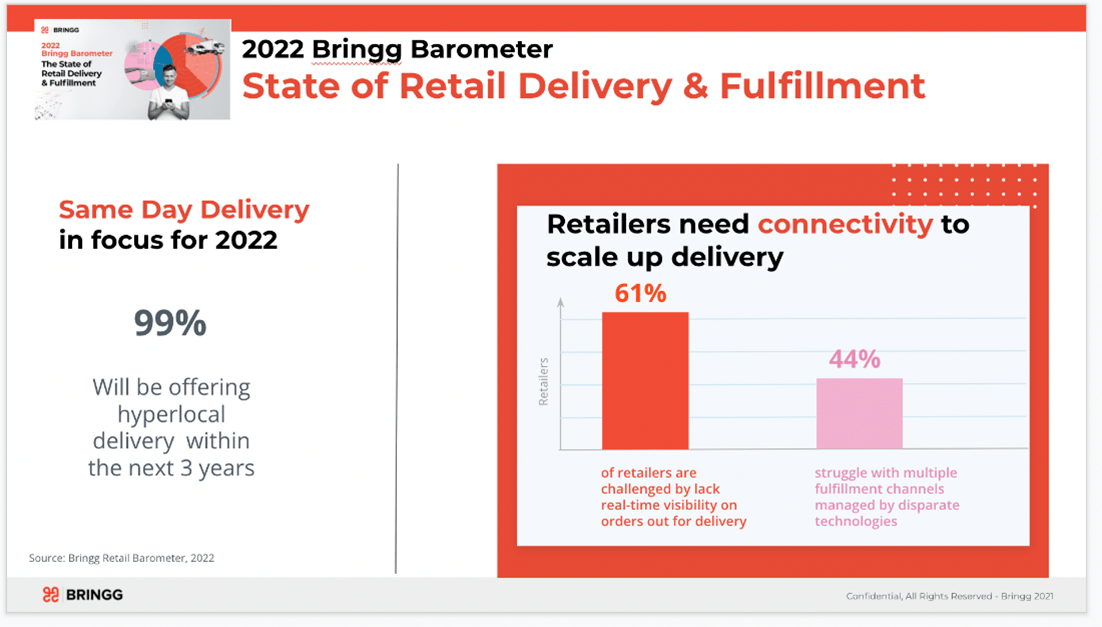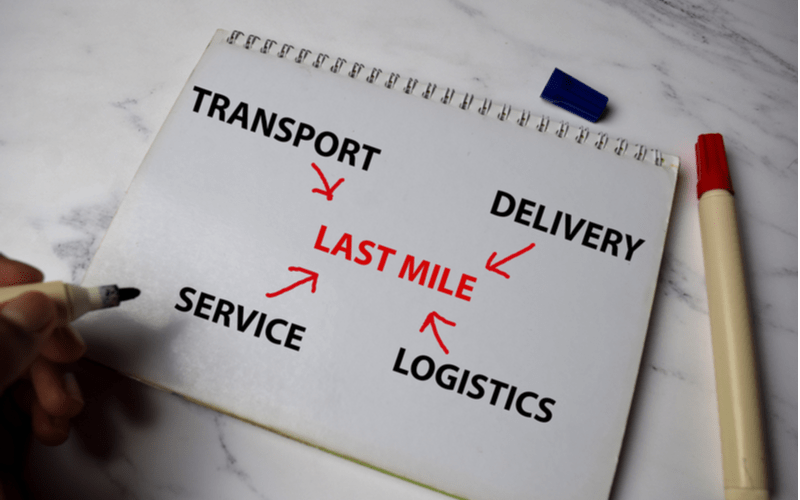A lot of recent media attention has been devoted to what might be considered “macro” logistics problems, such as port closures, blocked shipping lanes and a lack of ocean container capacity. These and other logistics challenges leave products stranded thousands of miles from their final destinations. End-to-end supply chain digitalization has proven essential in addressing these macro issues by finding alternate suppliers, locating or diverting inventory, identifying new routes, and taking other strategic actions.
But equally important today is the critical last mile of delivery. With incredible pressure on companies – especially retailers – to offer same-day delivery, how can this last mile be optimized at scale for both cost and service? Across hundreds of stores and a seemingly endless array of SKUs, how can retailers have the right products positioned optimally, in advance, to anticipate local demand variations?
This was the topic of a recent Blue Yonder Live session with our partner Bringg called “Where Is the Last Mile Going?” In this session, I was joined by Nikolai Avrutov, Vice President of Alliances at Bringg, and James Peck, Vice President of the Execution Pre-Sales Team at Blue Yonder.
Bringg focuses on orchestrating last-mile delivery for its customers, such as Day & Ross, Leroy Merlin, Autozone, Boulanger, COOP, KFC and, just recently, Asda (in partnership with Blue Yonder). Bringg’s partnership with Blue Yonder enables retailers, 3PLs and manufacturers to integrate the first, middle and last mile of logistics into one seamless platform, supporting greater flexibility in optimizing what is delivered by whom and when.
The Same-Day Delivery Challenge
Bringg recently released the results of its third annual Bringg Barometer, a market analysis based on the results of a survey of more than 500 retail executives worldwide. The study reveals retailers’ key priorities, as well as strengths and weaknesses in their last-mile fulfillment capabilities. According to Avrutov, the 2022 Bringg Barometer emphasizes the urgent need for retailers to master last-mile delivery.
“In this year’s survey, 99% of respondents said they will be offering same-day delivery within the next three years, compared to 35% who support same-day delivery today,” Avrutov says. “This is a goal largely driven by growing consumer demand for rapid delivery, and it makes sense. But the challenge is that many retailers are not equipped to deliver on that promise, while still protecting their profit margins. Their last-mile fulfillment models are simply not designed for same-day or on-demand delivery at the massive scale required for success.”
Peck agrees with this assessment. “Offering hyper-local delivery requires a lot of work upstream, starting with the initial consumer order. Retailers need to optimize both on-hand and future inventory, in real time, across their entire network to fulfill that order in an optimal way — one that balances service with cost,” he notes.
“In addition to optimal inventory placement, this may require innovative new fulfillment strategies,” Peck explains. “Retailers may need to set aside their traditional warehousing networks and get products closer to consumers via smaller-footprint warehouses and fulfillment centers, as well as ‘dark stores.’”
“They also need to master logistics on an end-to-end basis, all the way from the vendor across multiple nodes, and finally into the hands of a final-mile carrier. What we’re enabling with Bringg is connecting the consumer experience from the point when they receive the product, all the way back to when the order was placed — with the goal of closing that loop and optimizing the larger process of fulfillment,” notes Peck.

End-to-End Connectivity Is the Key
What’s the ultimate key to mastering the last mile? Avrutov notes that the 2022 Bringg Barometer reveals a clear answer.
“36% of retail executives say they simply don’t have the right technology resources in place, citing real-time order visibility as the main problem,” Avrutov explains. “A full 61% of retailers are blocked from scaling last-mile delivery because they lack real-time visibility into their deliveries. 44% say they’re challenged because they have multiple fulfillment channels managed by disparate technologies.”
“It’s clear that they need the kind of end-to-end visibility and connectivity that Blue Yonder and Bringg can deliver. Instead of developing in-house technology resources and specialized expertise, retailers can leverage our closely integrated, connected platform to achieve broad visibility and access real-time data across the fulfillment process, including that critical last mile,” Avrutov emphasizes.
“By using a unified platform, retailers can send and receive real-time data across the entire process, from the initial customer order through warehousing, transportation and the final mile. They can benefit from holistic tracking, from start to finish, without the typical silos.”
“That end-to-end connectivity, enabled by digitalization, is not only the smartest and most profitable last-mile solution, but it’s also the most sustainable solution,” he continues. “In the traditional multi-day delivery model, the retailer is delivering to consumers from a regional warehouse, or distribution center, that may be far from their homes. The retailer is processing 100 separate orders, with separate packaging, maybe separate truck routes, all heading from the warehouse to 100 destinations.”
“When the retailer instead partners with Blue Yonder and Bringg to optimize the end-to-end process, now they’re shipping same-day from a local store or a micro fulfillment center. Via accurate forecasting, the 100 items have already been sent to a local inventory position, which is cost-effective and sustainable. Now the 100 orders have to be separated and delivered over a much shorter distance. That’s smart and achievable,” Avrutov concludes.
“For retailers to attain that ambitious goal of same-day delivery, it’s all about maximizing profitability while balancing customer service over the final mile,” Peck adds. “They need to optimize inventory across multiple channels and consider future inventory availability at the same time. That requires accurate forecasting, inventory positioning and last-mile fulfillment. We’re excited to collaborate with Bringg to offer retailers that unique blend of expertise, along with the most advanced digital solutions for logistics and execution.”

